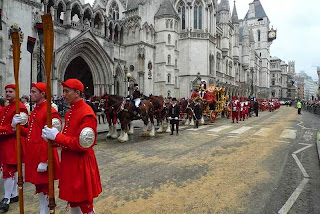Other Americans have often asked me if they celebrate Halloween in Great Britain and they are surprised to find out that it actually originated there. I explain that yes they do, but it is generally not the big over the top celebration that we have over here. Case in point, I was at a friend’s house today and I said that I was not particularly interested in Halloween and she agreed that she felt the same way. This was as she was showing me her multi lighted pumpkin, her witch shoe, her two lighted pumpkins, the skeleton on her front window, the Halloween chip and dip plate, and her ceramic ghost!
Samhain is the Irish/Celtic name for what we now call Halloween and Nos Galan Gaeaf is the Welsh name. It was an important time of year as it marked the end of the harvest season and the beginning of winter. Winter is the darker half of the year and it was seen as the time when spirits or fairies could come more easily into our world and were particularly active. On entrances to footpaths, it was said that dead persons could appear at midnight. In some parts of Wales, the cost was called the Ladi wen (white lady). Northern Wales called it the Hwch ddu gwta (tail-less black sow). In Scotland and Wales they would light huge bonfires on the hillside, often within sight of each other to see who could burn their fire the longest. People often took flames from the bonfire back to their homes, doused their hearth fires on Samhain night and reignited the hearth from the communal fire. Stones would be thrown into the fire and when the flames died down, everyone would run to escape from the Hwch ddu gwta. By the light of the next morning, they would try to find their stones and those who succeeded would be guaranteed good luck for the coming year. If you were one of the unlucky searchers bad luck or even death would come to you.
Our modern jack-ò-lantern actually originated in Ireland and the lights within were to represent the souls of the dead. Throughout the Gaelic and Welsh regions many games were played, often using apples and nuts. Trick or Treating may have come from the custom of going door to door collecting food for Samhain feasts and offerings.
 |
| Photo by Christine Moriarty© Owenynagat ('cave of the cats'), one of the many 'gateways to the Otherword ' from whence beings and spirits were said to have emerged on Samhain |
Other Americans have often asked me if they celebrate Halloween in Great Britain and they are surprised to find out that it actually originated there. I explain that yes they do, but it is generally not the big over the top celebration that we have over here. Case in point, I was at a friend’s house today and I said that I was not particularly interested in Halloween and she agreed that she felt the same way. This was as she was showing me her multi lighted pumpkin, her witch shoe, her two lighted pumpkins, the skeleton on her front window, the Halloween chip and dip plate, and her ceramic ghost!
Samhain is the Irish/Celtic name for what we now call Halloween and Nos Galan Gaeaf is the Welsh name. It was an important time of year as it marked the end of the harvest season and the beginning of winter. Winter is the darker half of the year and it was seen as the time when spirits or fairies could come more easily into our world and were particularly active. On entrances to footpaths, it was said that dead persons could appear at midnight. In some parts of Wales, the cost was called the Ladi wen (white lady). Northern Wales called it the Hwch ddu gwta (tail-less black sow). In Scotland and Wales they would light huge bonfires on the hillside, often within sight of each other to see who could burn their fire the longest. People often took flames from the bonfire back to their homes, doused their hearth fires on Samhain night and reignited the hearth from the communal fire. Stones would be thrown into the fire and when the flames died down, everyone would run to escape from the Hwch ddu gwta. By the light of the next morning, they would try to find their stones and those who succeeded would be guaranteed good luck for the coming year. If you were one of the unlucky searchers bad luck or even death would come to you.
 |
| Photo by Toby Ord |
Our modern jack-ò-lantern actually originated in Ireland and the lights within were to represent the souls of the dead. Throughout the Gaelic and Welsh regions many games were played, often using apples and nuts. Trick or Treating may have come from the custom of going door to door collecting food for Samhain feasts and offerings.





























